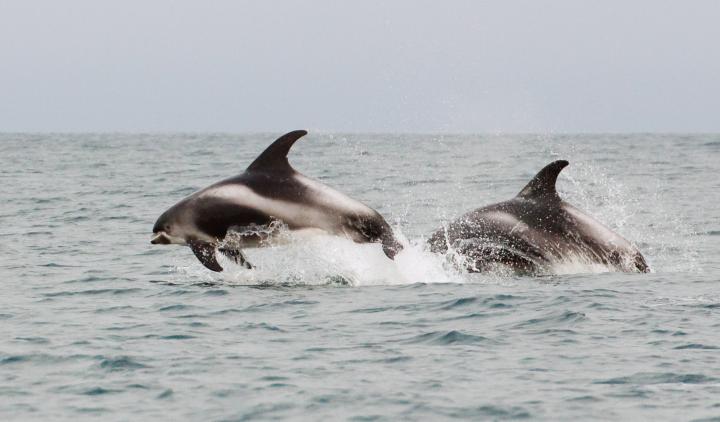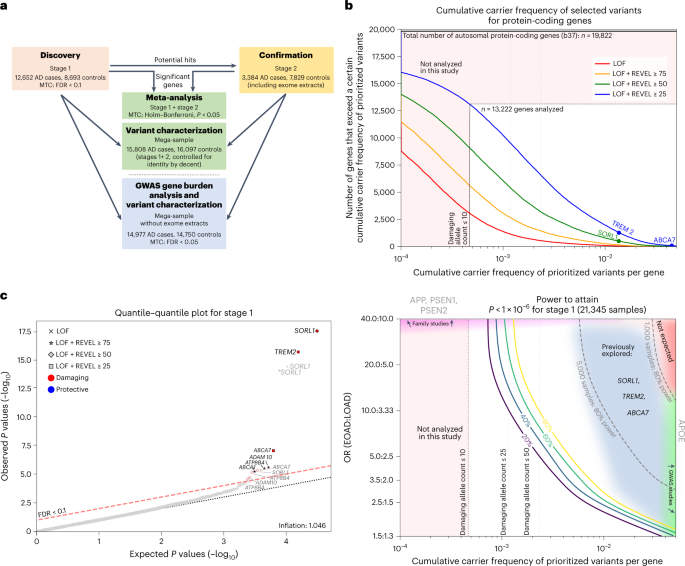新しい論文によると、3種の異なる座礁したイルカの脳には、アルツハイマー病の典型的なマーカーが見られるという。 The brains of three different species of stranded dolphins show classic markers of Alzheimer’s disease, according to a new paper.
2022-12-20 エディンバラ大学

専門家は、スコットランドの沿岸海域で座礁した5種22頭の歯鯨類(リッソーイルカ、ナガスクジラ、シロイルカ、港ネズミイルカ、バンドウイルカ)の脳を調べたところ、5種のうち4頭の脳は、異なる種類のイルカから構成されていた。
その結果、異なる種類のイルカから4頭が、人間のアルツハイマー病に関連する脳の変化のいくつかを持っていることがわかった。
この研究は、エジンバラ大学、セントアンドリュース大学、グラスゴー大学、モレダン研究所の共同研究であり、いくつかの耳介類で起こっている原因不明の座礁現象に答えを与える可能性があります。
クジラ、イルカ、ネズミイルカは、英国の海岸で定期的に座礁しています。浅瀬や砂浜に群れで座礁していることがよくある。
専門家チームによってより安全な深海に移動させられる動物もいますが、運が悪く、その結果死んでしまう動物もいます。座礁の根本的な原因は必ずしも明らかではなく、現在も研究が続けられている。
このプラークは、神経細胞の間で異常な量のアミロイドベータタンパク質が凝集して形成され、細胞の機能を破壊するものです。
特に3匹の動物(それぞれ異なるオドントセテス種)の脳には、アミロイドベータ斑のほか、認知症に関連する多くの病態が認められ、一部のオドントセテス種がアルツハイマー病様の神経病理を発症することが示されました。
しかし、どの動物もヒトの臨床的なアルツハイマー病と同じ認知障害を患っていたかどうかは確認できなかった。
<関連情報>
- https://www.ed.ac.uk/news/2022/stranded-dolphins-show-signs-of-alzheimer-s
- https://onlinelibrary.wiley.com/doi/abs/10.1111/ejn.15900
3種の外洋性イルカにおけるアルツハイマー病様神経病理 Alzheimer’s disease-like neuropathology in three species of oceanic dolphin
Marissa C. Vacher, Claire S. Durrant, Jamie Rose, Ailsa J. Hall, Tara L. Spires-Jones, Frank Gunn-Moore, Mark P. Dagleish
European Journal of Neuroscience Published: 13 December 2022
DOI:https://doi.org/10.1111/ejn.15900
Abstract
Alzheimer’s disease (AD) is the most common neurodegenerative disease and the primary cause of disability and dependency among elderly humans worldwide. AD is thought to be a disease unique to humans although several other animals develop some aspects of AD-like pathology. Odontocetes (toothed whales) share traits with humans that suggest they may be susceptible to AD. The brains of 22 stranded odontocetes of five different species were examined using immunohistochemistry to investigate the presence or absence of neuropathological hallmarks of AD: amyloid-beta plaques, phospho-tau accumulation and gliosis. Immunohistochemistry revealed that all aged animals accumulated amyloid plaque pathology. In three animals of three different species of odontocete, there was co-occurrence of amyloid-beta plaques, intraneuronal accumulation of hyperphosphorylated tau, neuropil threads and neuritic plaques. One animal showed well-developed neuropil threads, phospho-tau accumulation and neuritic plaques, but no amyloid plaques. Microglia and astrocytes were present as expected in all brain samples examined, but we observed differences in cell morphology and numbers between individual animals. The simultaneous occurrence of amyloid-beta plaques and hyperphosphorylated tau pathology in the brains of odontocetes shows that these three species develop AD-like neuropathology spontaneously. The significance of this pathology with respect to the health and, ultimately, death of the animals remains to be determined. However, it may contribute to the cause(s) of unexplained live-stranding in some odontocete species and supports the ‘sick-leader’ theory whereby healthy conspecifics in a pod mass strand due to high social cohesion.


